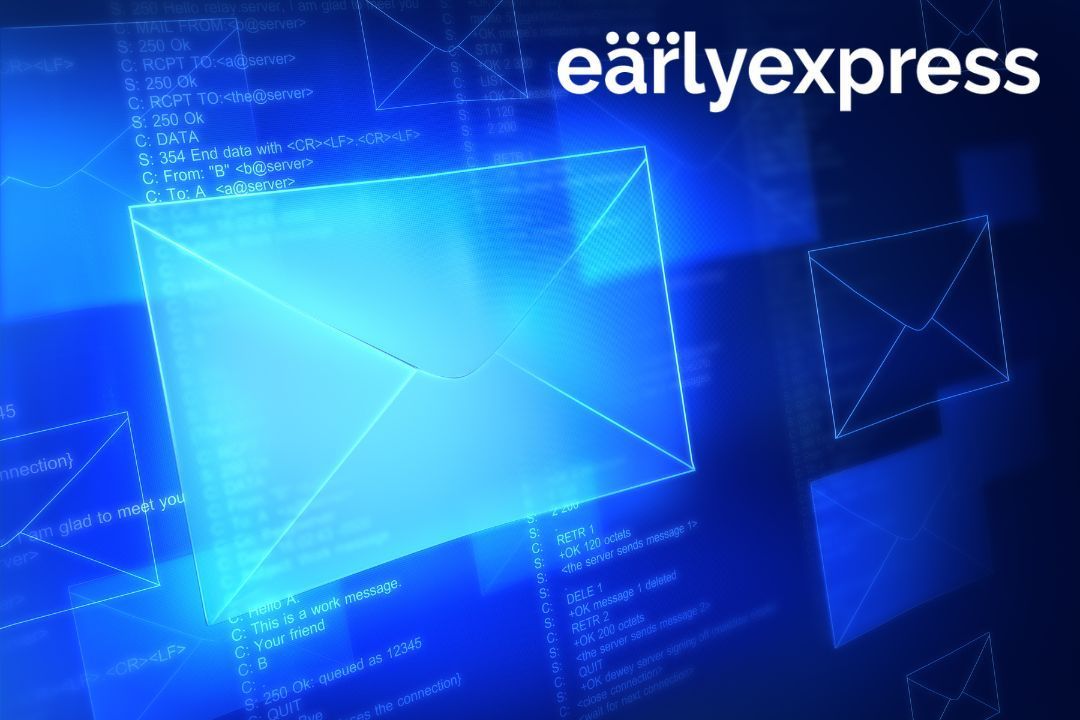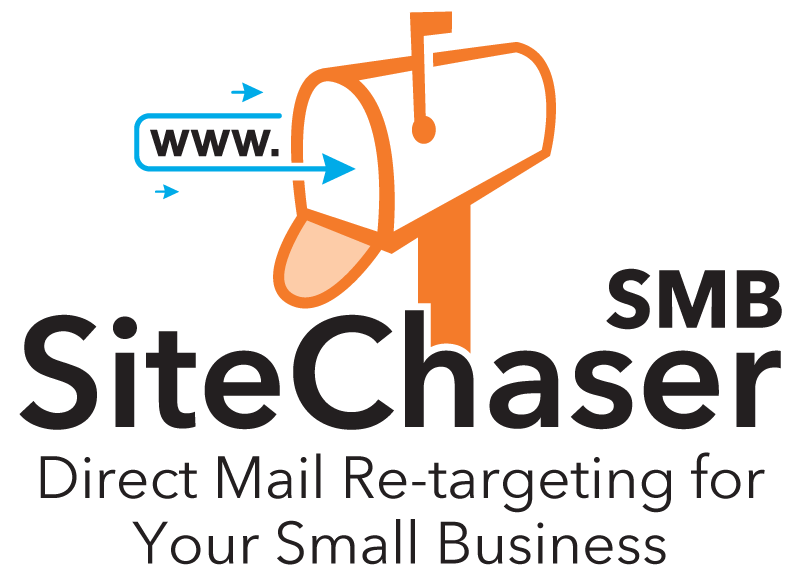How can you use direct mail for your nonprofit?
How can you use direct mail for your nonprofit?
Outreach and fundraising are critical to the success of any nonprofit organization. And that’s especially true now more than ever. Due to the global pandemic, a lot of nonprofits are struggling to raise enough funds. Without those funds, they aren’t able to continue providing the service their clients need. While traditional forms of fundraising—such as events and campaigns—aren’t able to happen right now, other forms—such as marketing—are having their moment to shine. One of those is direct mail marketing.
Direct mail is one of the most successful marketing tools, although it often gets overlooked for being outdated or ineffective. On the contrary—direct mail is 7 times more effective than all digital channels combined. Datafication and personalization take direct mail to the next level, allowing companies to reach their target audience with messaging that’s relevant and meaningful.
Ready to give direct mail a try? Here are 4 tips on using direct mail for your nonprofit:
1. Identify your audience
The first step in creating a direct mail marketing campaign is to identify your target audience. Are you trying to connect with donors, new members or volunteers? Defining your audience is important because it affects the messaging you use in your campaign.
In order to help you segment your audience even further, you can use targeted lists. Direct mail targeted lists can be based on existing lists, such as past event attendees, or a variety of demographics, including geographic regions. Segmenting your audience this way ensures that you reach the right target with the right message, which makes direct mail that much more effective.
2. Craft a compelling story
One benefit of direct mail is that it allows you to appeal to your audience’s emotions. The best way to do this is to tell a story about your nonprofit. Think about your direct mail sitting in someone’s mailbox. What image would grab their attention? What headline would cause them to read the rest of the copy? You want to create a compelling story that catches their eye from the beginning.
You can also use this opportunity to tweak your messaging based on the different audiences you identified earlier. For example, your donors might be more interested in the logistics of your nonprofit and how those have been impacted by COVID while volunteers are more interested in hearing the story and background behind your nonprofit. Either way, use both imagery and messaging to support your narrative.
3. Make it personal
There’s a good chance you’ll be sending direct mail to donors or volunteers that have supported your nonprofit before. Without their generosity, it’s possible that your organization might not exist. That’s why personalization is even more critical in a fundraising campaign for nonprofits.
When addressing your direct mail, use the names of your donors or volunteers instead of a blanket introduction. If you know they’ve supported you in the past, call it out and thank them for their continued support. You could even include an old picture of them attending an event (during pre-COVID times) to take the personalization to the next level. All of these efforts will make your recipients feel special and lead to stronger, better relationships.
4. Mix direct mail with digital
One of the best ways to maximize your direct mail efforts is to mix it with your digital marketing campaign. For example, you can run a social media ad targeting the prospective donors or volunteers from your earlier segmented lists. You could also send an email following your direct mail campaign to provide more details to donors and volunteers about your organization. Combining both digital and direct mail helps reinforce your messaging and further guarantee that you are reaching your target audience.
Direct mail is an easy choice for nonprofits, but the success of your campaign depends on your overall strategy. Early Express offers multiple direct mail services — including targeted lists, data processing and daily mail management—to ensure your marketing campaign is effective and efficient.

For companies looking to increase their online customer reach, omni-channel marketing strategies are showing a lot of promise. They also have potential for those looking to increase sales and customer retention. Studies reveal that omni-channel marketing has a 90% higher overall customer retention rate than traditional marketing. In order to decide if an omni-channel marketing strategy is right for your business, let’s first take a look at what omni-channel marketing is. What is omni-channel marketing? Omni-channel marketing uses digital and traditional marketing channels to create a seamless message that adjusts to your customer based on their behavior, providing the ultimate personalized customer experience. Instead of focusing your marketing efforts on a single channel, omni-channel marketing takes advantage of multiple channels to ensure your message is seen and reinforced by potential customers, wherever they are. Omni-channel marketing sounds pretty straightforward, but having a coherent strategy is key to the overall success. Omni-channel efforts don't pay off if you try to do everything at once and give equal weight and attention to every channel. Instead, you must make data-driven choices about reaching customers. Here are some principles to keep in mind when developing your omni-channel marketing strategy. Omni-channel marketing principles Know your audience One of the most important tactics for successful omni-channel marketing is understanding your audience. Gather as much data on you can about who is using your product or service as well as who you wish was using your product or service. Then tailor your marketing strategy to those demographics. Does your audience prefer social media or email? If social media, which channels do they interact with the most? What times are they the most active? All of this data plays a huge role in your overall strategy. Additionally, it’s important to understand the behavior of your audience. What are their likes and dislikes? How do they feel about popular social and economic topics? What are their shopping behaviors? How does your product or service fit into their lifestyle? A comprehensive understanding of your audience’s behavior and goals allows you to tailor your message—and even digital channel—to meet your audience where they are. Get customers to the end goal fast If your marketing is successful (which is the goal!), your audience will be interested in purchasing or learning more about your product or service. The last thing you want is for customers to have to hunt around to find your website or the product they are interested in purchasing. That’s why it’s critical to make it as easy as possible for customers to get to the end of the funnel, even if that means directing them somewhere else besides your website. Take advantage of shopping features within social media platforms to remove extra steps and put customers even closer to checking out. Don’t forget about physical strategies In today’s world, it can be easy to focus solely on digital marketing channels. However, the beauty of omni-channel marketing is combining both digital and traditional marketing to create a comprehensive strategy that reaches all relevant customers. Both Site Chaser and IP Targeting are effective omni-channel programs that combine both digital and traditional marketing. Site Chaser targets your website visitors with direct mail. After visiting your website, customers receive a direct mail piece promoting your business within a few days. This ensures your business is top of mind and gives you the chance to continue the conversation started online. IP Targeting uses your direct mail mailing list to target potential customers with online ads. The ads reinforce your brand and drive traffic to your store or website. Those additional touches typically result in higher revenue. If you’re looking for an omni-channel marketing plan, contact Early Express for offline and online solutions for your business.

When it comes to marketing, businesses tend to focus first and foremost on digital marketing. Email, social media, videos and blog posts are all successful ways to reach customers quickly and effectively. But there’s still a time and a place for physical mail. Customers love receiving personal notes and packages. It brings up a sense of nostalgia. If you’re looking for unique, interesting ways to reach your audience, here are some tips on how to take advantage of more traditional marketing: snail mail. 1. Make it exclusive Forget digital invites to events or emails with updates on your company. Instead, send a physical piece to valued customers, such as investors or prospects. This unique approach will cut through the clutter of their inbox and land in their mailbox. In addition to helping your business stand out, you’ll make the recipient feel important and special. 2. Surprise your customers One benefit of physical mail is the element of surprise. Most customers expect to receive an email from a company before receiving a mailer. Use this to your advantage as a way to delight customers. Use social media to find prospective customers that could benefit from your product. For example, if you sell coffee, find a sleep deprived mom complaining about her lack of energy. Contact prospective customers for their address and send them a little something from you. Not only will this cause a smile, it’s likely to be shared on social media, which will earn your company even more visibility. 3. Go handwritten What’s even more exclusive than physical mail? Receiving physical mail that’s been handwritten. Use this approach to add a more personal touch to everything from thank you cards to holiday or anniversary cards. Don’t have the time to write it yourself? Early Express offers handwritten direct mail services, which include handwritten fonts as well as pen-to-paper solutions. Either way, your customers are bound to be impressed. 4. Integrate your digital and direct mail services On its own, direct mail marketing is an effective strategy. However, it’s even more successful when combined with digital marketing services. Improve your return on investment by embracing personalized URLs (PURLs) and custom landing pages in direct mail campaigns. These digital efforts give potential consumers a firsthand experience of your brand while employing a high level of customer care. 5. Say thank you There’s no better way to show someone you appreciate them than with a handwritten thank you note. It shows you're taking the time to build a relationship. If you’re a small business or a start up, send physical thank you notes to customers as a way to express your gratitude for their support. You can even add some brand personality, and use your company stationary. Don’t have any? Early Express offers a variety of business stationary, including letterhead, envelopes and more. Regardless of your marketing strategy, snail mail can be beneficial in engaging and connecting with your customers in a unique way. For all of your marketing services, including direct mail, print and design services, and omni-channel marketing, reach out to Early Express for effective solutions that drive results.

The goal of any business is to connect customers with the products and services they want. Too often, companies can come across like they don’t care about the individuals purchasing their products and supporting their company. Instead, it seems like they are trying to sell to anyone who will buy from them. That’s why personalization plays a large role in successful marketing. As one of the most effective marketing tools, direct mail has one of the best response rates and highest returns on investment. But how can you make direct mail even more profitable? Make it personal. Personalized direct mail increases response rates by 36%. Customers like feeling important and valued. Here are a few things to keep in mind when developing personalized direct mail for your business: Talk directly to your customers One of the easiest ways to personalize your direct mail is to include the customer’s name. This could be at the beginning, as part of the greeting, or even throughout the message. When you use someone’s name, they are more likely to listen, read and respond. Write your direct mail like you are talking with your customers, not at them. Make it feel like a conversation. This along with additional personalization will build their trust and get them on your side. Use imagery to your advantage In addition to personalizing the text within your direct mail, you can also add a personal touch with your choice of imagery. You will most likely use visuals that are relevant to your business. But you can take personalization to the next level by using visuals that are relevant to your audience. If you know the demographics, like gender and age, of your target audience, make sure to represent them with any lifestyle imagery or visuals that you choose. Customers respond best to advertising that reflects them, so this is an easy way to make that happen. Personalization equals relevancy A primary benefit of personalization is that it creates relevant, valuable content that’s important to customers. If you have data on your customers, you can use that to your advantage. For example, if you are a local dog grooming company targeting pet owners, you could mention your customers’ “fluffy friends” or even personalize the direct mail directly to their beloved pets. Not only will this surprise and delight customers, it will capture their interest and make them more likely to read the rest of your message. Leverage targeted lists Targeted mailing lists help you reach the right audience by giving you more control over who receives your message. With the ability to segment your list by almost any criteria imaginable, you can be specific about who you’re targeting. This approach also allows you to tailor your message to the needs and desires of each audience, no matter how niche the market, and, in turn, leads to greater engagement and higher direct mail response rates. Popular targeted lists include B2B, New Mover, Renter, Homeowner and Current Customer mailing lists. Considering a direct mail campaign as part of your marketing strategy? Early Express can help you create the perfect direct mailing campaign, including a targeted list to meet the prospecting needs of your business. We also offer data processing (to ensure your data is clean and up-to-date), daily mail processing and EDDM (Every Door Direct Mail).

Direct mail marketing is still one of the most effective marketing tools. In addition to taking advantage of empty mailboxes, direct mail marketing can be segmented and personalized to capture the attention of various audiences and appeal to their unique perspectives. Effective audience segmentation is the foundation of any successful direct mail campaign, and the first step is a great mailing list. What is audience segmentation? Audience segmentation is the process of dividing a large group into smaller groups so you can tailor your messaging to their needs. When it comes down to it, the best way to connect with prospective customers is to learn everything about them, and incorporate that knowledge into your campaign. Segmenting your audience also helps you avoid the pitfalls of assuming you can attract everyone with the same mail piece and offer. It’s key to understand that you have several audiences who all have different expectations and requirements. Once you’ve segmented those audiences meaningfully, you’ll be able to create appealing offers that resonate with their needs. How should you segment your audience? Ultimately, it’s up to you how you decide to segment your audience. However, there are 5 popular and successful segmentation methods that work well for any business. 1.Geographic Segmentation Geographic segmentation is based on the location of your existing or prospective customers.There’s a good change that if you’re using direct mail as a marketing tactic, you’re already segmenting your audience geographically in some way. With this type of segmentation, you can target a specific geographic area (country, state, street, and everything in between). 2. Demographic Segmentation Demographic segmentation is when you group people together using specific demographic data, like age, gender, income and more. Employing this type of segmentation allows your business to connect with customers on a more personal level because you can create offers and messaging that’s more relevant to their lives. 3. Behavioral Segmentation Behavioral segmentation combines psychology with demographics to get a better understanding of your audience. This allows you to use more specific messaging for groups of people with unique attitudes, personalities and interests. Usually this type of segmentation is used for companies offering specialized products and services. 4. Customer Status Segmentation Customer status segmentation takes into account where prospects are in the sales journey, from awareness to consideration to purchase and even post-purchase. Once you know where specific customers fall within this journey, you can use direct mail to give them a push towards purchasing. You can also use this approach to re-engage past customers that haven’t purchased from you in a while. Choosing which segmentation is right for your business can be challenging. Early Express can help you segment your direct mail audience and create custom, targeted mailing lists based on these segmentations. In addition to targeted lists, our direct mail services include saturation lists (reaching audiences in large cities, zip codes or geographic areas), Every Door Direct Mail (targeting business and residents along a mail route) and daily mail processing.






